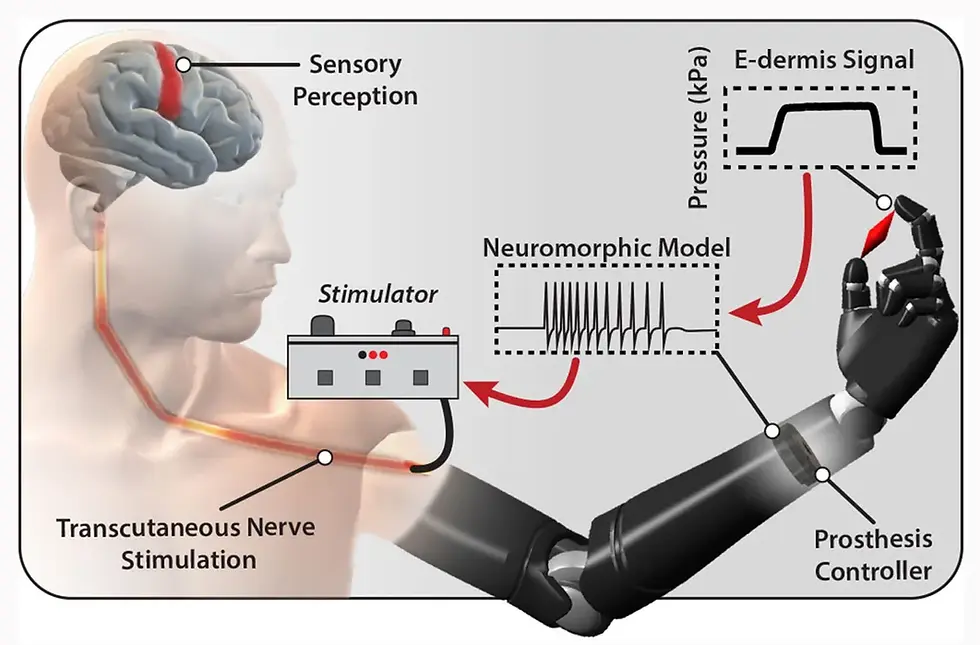Targeted Muscle Reinnervation (TMR) Surgery: A Revolutionary Advancement for Amputees
- Vikram Choudhary
- Nov 4, 2023
- 3 min read
Updated: Jan 9, 2024

Introduction:
The field of prosthetics has seen remarkable advancements in recent years, and one of the most groundbreaking developments is Targeted Muscle Reinnervation (TMR) surgery. This innovative procedure has the potential to transform the lives of amputees by enhancing their prosthetic control and functionality. In this blog, we will explore the world of TMR surgery, its incredible benefits, and how it offers new hope to individuals who have experienced limb loss.
https://healthcare.ascension.org/doctors/1750498242/edgardo-rodriguez-collazo-chicago-il
Understanding TMR Surgery:
Targeted Muscle Reinnervation (TMR) is a surgical procedure designed to improve the interaction between the human nervous system and prosthetic devices. The primary goal of TMR is to reroute nerves from an amputated limb to nearby, healthy muscles. This rerouting creates a new pathway for nerve signals, allowing for more natural and intuitive control of prosthetic limbs.
The Science Behind TMR:
The procedure involves identifying and connecting residual nerves from the amputated limb to specific muscle groups in the residual limb. When the individual thinks about moving their missing limb, the reinnervated muscles contract, generating electrical signals that can be detected by sensors in the prosthetic limb. This allows for precise control and a more natural range of movements.
Benefits of TMR Surgery for Amputees:
Enhanced Prosthetic Control: TMR surgery significantly improves the control of prosthetic limbs. Amputees can perform a wider range of movements with greater precision and accuracy.
Reduced Phantom Limb Pain: Many amputees experience phantom limb pain, a phenomenon where they feel pain in the missing limb. TMR surgery has been shown to alleviate or reduce phantom limb pain for some individuals.
Improved Quality of Life: With better prosthetic control and reduced discomfort, TMR surgery often results in an improved quality of life. Individuals can perform daily tasks more easily and regain a sense of independence.
Customized Functionality: TMR surgery can be tailored to an individual's specific needs and the type of prosthetic limb they use. This customization allows for a better fit with the person's lifestyle and requirements.
Potential for Advanced Prosthetic Technology: TMR opens the door to more advanced prosthetic technology, including myoelectric prosthetics that respond directly to muscle signals, providing a more intuitive experience.
The Procedure and Recovery:
TMR surgery is a specialized procedure that should be performed by a qualified surgeon with expertise in the field. The surgery typically takes several hours, during which nerves are rerouted and reconnected to muscles in the residual limb.
Recovery from TMR surgery involves physical therapy and rehabilitation to help patients adapt to their enhanced prosthetic control. Over time, individuals learn to harness the power of their reinnervated muscles to control their prosthetic limb with greater ease.
The Promise of TMR Surgery:
TMR surgery offers new hope to amputees by significantly improving their prosthetic control, comfort, and overall quality of life. As the field of prosthetic technology continues to advance, procedures like TMR are unlocking new possibilities for individuals who have experienced limb loss. The ability to regain a sense of independence and improved mobility is a transformative aspect of this groundbreaking surgery.
In conclusion, Targeted Muscle Reinnervation (TMR) surgery represents a remarkable leap forward in the field of prosthetics. With its potential to enhance the lives of amputees, TMR offers new hope, empowering individuals to regain control over their bodies and their future. If you or someone you know is considering TMR surgery, it's essential to consult with a qualified medical professional who specializes in this area to explore the options and benefits available.














Comments